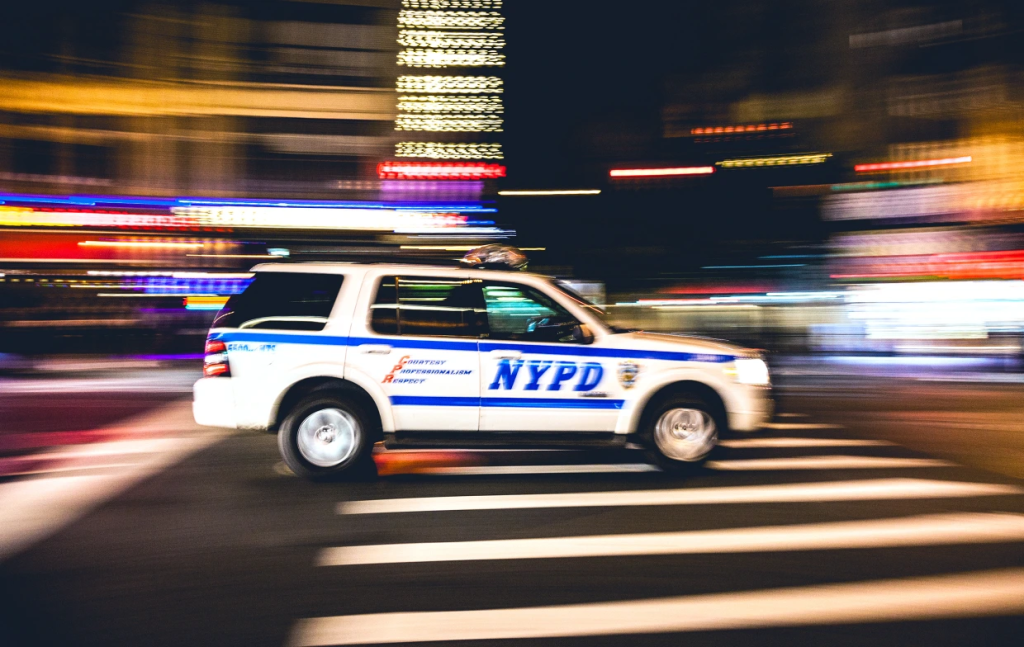
Crime dropped under stop-and-frisk, which is worth remembering in the rush to criticize it
by Summer July 3, 2023 0 commentsNew York went too far with the practice, but it helped reduce a staggering crime rate that damaged communities far more than the tactics used by police.

March 6, 2020, 4:30 AM EST
By Lawrence Rosenthal
In the late 1980s, the United States experienced an unprecedented spike in violent crime. Alarmed voters demanded action. Elected officials responded. One of those responses was stop-and-frisk policing. Crime declines followed, and voters applauded.
Time has not been kind to the advocates of stop-and-frisk. Today, crime rates have reached historic lows, and voters have turned their attention elsewhere. Stop-and-frisk is now frequently denounced as unjustified and racist, as it was during the recent presidential campaign of former New York Mayor Mike Bloomberg. But that should not be the final word. The real story is far more complicated, and it would serve those who criticize stop-and-frisk well to consider the successes that it and other forms of proactive policing achieved, as well as the evidence suggesting that it was necessary and rooted in something other than racism.
Indeed, consider the case of New York. Criminologists often focus on homicide statistics to track violent crime. In New York, homicide rates rose from 4.7 per 100,000 population in 1960 to a peak of 31.0 in 1991 in waves that roughly corresponded to drug epidemics. The homicide rise was concentrated in firearms-related homicides.
In 1991, under Mayor David Dinkins, New York began to expand its police force and adopted a community policing model emphasizing foot patrol and combating low-level disorder. Three years later, after the election of Mayor Rudy Giuliani, New York began to place greater emphasis on stop-and-frisk tactics, in which officers would briefly detain someone they suspected of wrongdoing and perform a pat-down frisk for weapons. New York also adopted a system of statistical analysis known as “Compstat,” which targeted enforcement at hot spots of crime and imposed greater managerial accountability on police command staff. The policy was continued by New York’s next mayor, Bloomberg, who took office in 2002.
Beginning in 1991, New York experienced the broadest and deepest decline in violent crime of any major American city. By 2013, Bloomberg’s last year as mayor, the murder rate had dropped to 3.3 per 100,000 population, or 335 in a city of more than 8 million. Chicago, in contrast, with a population less than half that of New York, had 415 homicides in 2013. New York’s homicide drop was concentrated in firearms-related homicides committed outdoors.
It is difficult to identify any factor unrelated to policing that explains this extraordinary crime decline. Changes in the composition of New York’s population or its economic conditions do not explain the drop, according to criminologists who have studied the data. The legalization of abortion and increased incarceration rates probably explain some of New York’s crime decline, but not nearly all of it. And although the crack epidemic likely fueled the crime surge, it seems unlikely that drug-related violence abated on its own. There is little evidence, for example, that the demand for illegal drugs lessened in New York during the crime drop. Instead, it appears that New York discovered better ways to prevent drug-related violence.
New York started expanding its police force in 1991, but the crime decline continued even after it stopped growing, suggesting that policing tactics rather than numbers were the key. To understand the role of policing tactics in combating crime, in turn, it is important to focus on the geography of crime.
Areas of concentrated disadvantage with high rates of racial isolation and social instability experience particularly high crime rates. The geographic “lumpiness” of crime, however, is not solely a function of community. Even within what are considered high-crime neighborhoods, crime tends to cluster at discrete hot spots. Hot spots appear in locations where potential offenders believe they enjoy relative impunity. Thus, when street gangs conclude that they can carry guns and drugs without fear of police at locations frequented by drug buyers, profitable open-air drug markets will likely flourish.
Accordingly, targeted stop-and-frisk policing makes a great deal of sense. When undertaken with frequency and carried out at hot spots of drug- and firearms-related crime, stop-and-frisk tactics can alter the perceptions of potential offenders by making apparent the risks of carrying drugs or guns in public. Once drugs and guns are driven off the streetscape, the risks of violent confrontation decrease and community destabilization driven by open and notorious criminality can be reversed. In contrast, a reactive strategy, which has police appear only when someone calls 911, encourages offenders to intimidate the community so no one calls for help.
Aggressive patrol at statistical hot spots of crime is the single crime control policy that has generated the most consistent evidence of its efficacy. Indeed, a study by the liberal Brennan Center found that the introduction of Compstat tactics in major cities was the only law enforcement tactic that had a demonstrable relationship to subsequent reductions in crime.
As in all debates about policing and crime, a myriad of factors are at work, and rarely can causal statements be made with complete confidence. Yet the available data make a serious case for stop-and-frisk’s ability to drive down crime when deployed with targeted precision, as Compstat envisioned.
It is also worth remembering that people of color bear the brunt of violent crime. At the peak of New York’s crime wave in 1991, the homicide victimization rate in New York was 58 per 100,000 for people of African ancestry, 44 for Hispanics and 8 for whites. By 2007, the black homicide victimization rate had declined to 15.9 per 100,000 population, the Hispanic rate to 4.9 and the white rate to 1.55. Thus, the lives saved by New York’s policies were disproportionately those of people of color.
Critics of stop-and-frisk argue that it produces unwarranted and discriminatory stops and point to the evidence assembled in Floyd v. City of New York, in which federal Judge Shira Scheindlin found that New York engaged in a pattern of unjustifiable and racially discriminatory stop-and-frisk policing. But Scheindlin’s reasoning is open to serious question.
Any policing tactic can be abused by the overzealous officer, and stop-and-frisk horror stories abound. The Supreme Court has ruled, however, that stop-and-frisk is constitutional when based on an officer’s reasonable suspicion that lawbreaking is under way, even though that standard “falls considerably short of satisfying a preponderance of the evidence standard” and “accepts the risk that officers may stop innocent people.”
Judged by these constitutional standards, New York’s 12 percent “hit rate” — the percentage of stops that Judge Scheindlin acknowledged resulted in an arrest or a summons according to the data before her — does not look so bad. It looks even better when one considers that even an apparently unsuccessful stop-and-frisk can create important benefits by deterring potential offenders and cooling off crime-ridden hot spots. It is hard to blame New York for using tactics that the Supreme Court has blessed.
Scheindlin also ruled that New York had “a policy of indirect racial profiling.” Indeed, there is ample evidence that African Americans and Hispanics were stopped out of proportion to their representation in New York’s population. Crime rates, however, are largely driven by poverty, and because people of color disproportionately live in high-poverty areas, we should expect that a stop-and-frisk policy properly targeted at hot spots of crime would disproportionately stop persons of color.
In light of differential rates of offending, elevated search rates for minorities may not be troubling as long as hit rates are comparable for whites and people of color. If so, police are acting on comparable evidence regardless of the race of a suspect. Indeed, a Rand Corp. study of 2006 New York stop-and-frisk data concluded, after considering arrest rates and the races of criminal suspects, that there was no evidence of racial discrimination.
New York is not beyond reproach. Under Bloomberg, the number of investigative stops by police officers more than doubled, to 686,000, by 2011. This dramatic surge likely pushed stop-and-frisk well beyond statistical hot spots of crime and to the point of diminishing returns.
In March 2013, New York issued a new directive requiring officers to provide a detailed narrative justifying a stop, which officers interpreted as an indication that their stops would be carefully scrutinized. That led to a dramatic reduction in stops. Even so, crime did not increase, and the more limited program of stop-and-frisk increased the rate at which weapons were recovered during stops.
In all things, we must seek the middle ground, including stop-and-frisk. That means acknowledging where stop-and-frisk went too far but also where it and other proactive policing measures succeeded in reducing a staggering crime rate that damaged communities far more than the tactics used by police.







No Comments so far
Jump into a conversationNo Comments Yet!
You can be the one to start a conversation.Only registered users can comment.